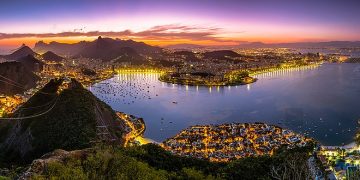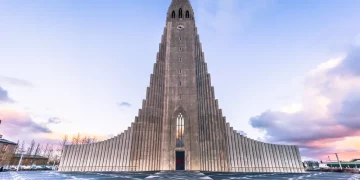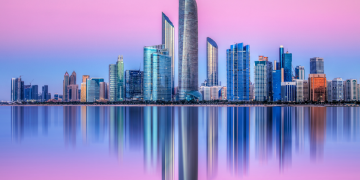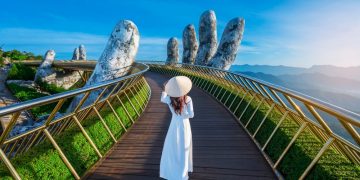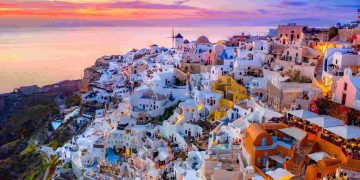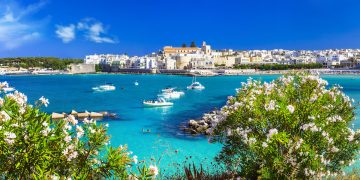What Makes the Natural Scenery of Seychelles So Unique and Captivating?
The Seychelles archipelago, made up of 115 islands scattered across the Indian Ocean, is a paradise like no other. Known for its stunning beaches, clear turquoise waters, and lush tropical forests, Seychelles’ natural scenery is as diverse as it is breathtaking. With its diverse ecosystems, rare flora and fauna, and pristine environments, the islands have become one of the world’s most sought-after travel destinations.
From the towering granite mountains of Mahé to the coral reefs surrounding Praslin, and the untouched beaches of La Digue, Seychelles offers a wide array of natural wonders that captivate visitors. But what is it that makes Seychelles’ natural scenery stand out?
This article will take an in-depth look at the unique beauty of the Seychelles, exploring the various facets of its natural landscape. We will delve into the islands’ geography, its diverse ecosystems, the incredible biodiversity that thrives here, and the importance of conservation efforts. From the famous beaches to the lush mountains and tropical forests, we will explore the treasures that make Seychelles one of the most beautiful destinations on Earth.
Geography and Overview of Seychelles’ Natural Scenery
Seychelles is located in the Indian Ocean, about 1,600 kilometers east of mainland Africa, and around 1,000 kilometers north of Madagascar. The archipelago is composed of two distinct groups of islands: the Inner Islands and the Outer Islands.
- The Inner Islands: These are the more well-known islands, including Mahé, Praslin, La Digue, and Silhouette. They are primarily granite islands with steep, rugged mountains and lush vegetation. The Inner Islands are home to the majority of the population, as well as the country’s capital, Victoria, on Mahé.
- The Outer Islands: These are coral atolls and small islands that lie further from the main islands. The Outer Islands include Aride, Alphonse, Desroches, and Cousin Island, among others. These islands are much less developed, offering more pristine environments and untouched ecosystems.
Each island in Seychelles offers a unique perspective on the country’s natural beauty, from towering granite peaks and waterfalls to tranquil beaches, coral reefs, and verdant forests.
The Iconic Beaches of Seychelles: A Tropical Dream
Seychelles is perhaps most famous for its beaches, many of which are regularly listed among the most beautiful in the world. The pristine white sands and crystal-clear waters make these beaches an iconic symbol of tropical paradise. However, each beach has its own charm and natural features that contribute to Seychelles’ diverse landscape.
- Anse Source d’Argent (La Digue): Famous for its dramatic granite boulders and calm, shallow waters, Anse Source d’Argent is often considered one of the most photographed beaches in the world. The sand is soft, and the water sparkles in hues of turquoise and emerald. Its unique rock formations and vibrant marine life make it a must-see beach for travelers.
- Anse Intendance (Mahé): Located on the southern coast of Mahé, Anse Intendance is a more secluded beach, offering dramatic scenery and strong waves that attract surfers. The beach is surrounded by lush greenery and towering granite cliffs, providing a truly wild and untouched environment.
- Anse Lazio (Praslin): Widely regarded as one of the best beaches in the world, Anse Lazio is famous for its soft sand, crystal-clear waters, and scenic surroundings. The beach is backed by large granite boulders, and the palm trees offer some shade from the tropical sun.
- Anse Georgette (Praslin): Accessible only by foot or boat, Anse Georgette is a hidden gem known for its calm waters, golden sand, and the surrounding flora and fauna. Its pristine condition makes it one of the most serene and idyllic spots in Seychelles.
- Anse Marron (La Digue): For those seeking a more off-the-beaten-path experience, Anse Marron is a secluded beach accessed by a challenging but rewarding hike. The stunning surroundings and crystal-clear water are well worth the effort.
The Lush Forests and Greenery of Seychelles
Beyond the beaches, the forests of Seychelles offer an entirely different aspect of the country’s natural beauty. The tropical forests are rich in biodiversity, with lush vegetation and a variety of unique flora and fauna. The islands’ forests are particularly famous for their endemic species, many of which cannot be found anywhere else in the world.
- Morne Seychellois National Park (Mahé): Spanning across the central region of Mahé, the Morne Seychellois National Park is one of the country’s largest protected areas. The park is characterized by dense tropical forest, mist-covered mountains, and spectacular panoramic views of the island. Its hiking trails lead to the summit of Morne Seychellois, the highest point in Seychelles, which rises to 905 meters above sea level.
- Vallée de Mai (Praslin): A UNESCO World Heritage site, Vallée de Mai is an ancient forest on Praslin, home to the rare Coco de Mer palms. This lush forest is like stepping into a prehistoric world, with towering palms, thick undergrowth, and endemic species of birds, reptiles, and insects. The park also has hiking trails that take visitors through its magical environment.
- La Digue’s Tropical Forests: The small island of La Digue is home to some lovely nature reserves, including Veuve Nature Reserve, which protects the endangered Black Paradise Flycatcher. The island also features lush forests with a variety of tropical plants, offering stunning views and peaceful hikes.
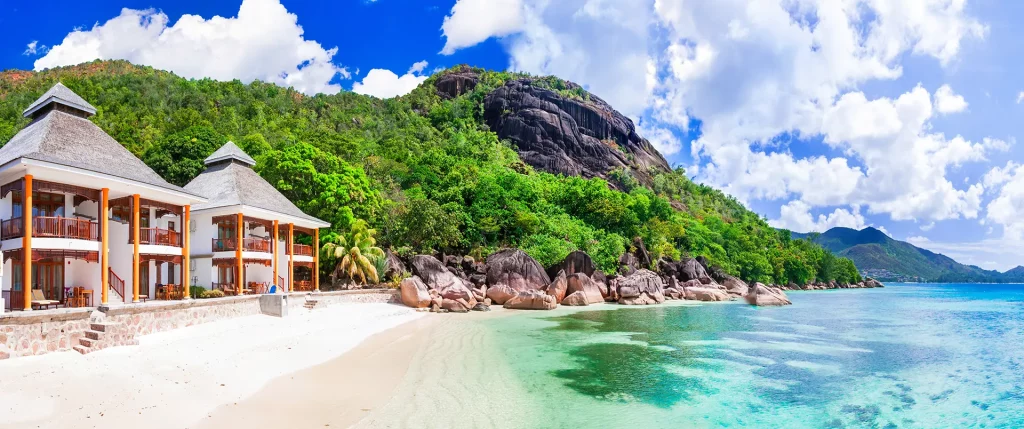
The Unique Wildlife of Seychelles
Seychelles is home to a wealth of endemic species—animals and plants that are found nowhere else in the world. This is due in part to the archipelago’s isolated location and the unique environmental conditions. Seychelles’ wildlife ranges from tiny insects to large marine species, with several protected areas dedicated to preserving these incredible creatures.
- Giant Aldabra Tortoises: One of the most iconic animals in Seychelles is the Aldabra Giant Tortoise, which can be found on several islands, including the Aldabra Atoll (a UNESCO World Heritage site). These massive, slow-moving tortoises are considered some of the largest in the world, and some live for more than 100 years.
- Birdlife: Seychelles is a birdwatcher’s paradise, with over 10 species of endemic birds. Some of the most famous include the Seychelles Black Parrot (found only in Vallée de Mai) and the Seychelles Warbler, both of which are rare and protected species. The island of Cousin Island is home to many of these species and is a popular spot for birdwatching.
- Marine Life: The surrounding waters of Seychelles are home to an incredible array of marine life. Coral reefs around the islands host vibrant underwater ecosystems, including marine turtles, dolphins, and a variety of colorful fish. Snorkeling and scuba diving are some of the most popular activities in Seychelles, with the waters offering crystal-clear visibility and thriving biodiversity.
- Endemic Flora: Beyond the forests, Seychelles is home to unique plants, including the Coco de Mer, the world’s largest seed, found in the Vallée de Mai. The islands also feature species of orchids, mangrove trees, and various types of palms.
Coral Reefs and Marine Ecosystems
The coral reefs surrounding Seychelles are some of the most well-preserved in the world. These reefs form a crucial part of the island’s natural scenery and provide a habitat for a rich diversity of marine life. The shallow waters and clear visibility make Seychelles a prime destination for snorkeling and scuba diving.
- Ste Anne Marine National Park: Located off the coast of Mahé, Ste Anne Marine National Park is home to a large number of vibrant coral reefs and a wealth of marine species. The park includes several islands, and visitors can enjoy snorkeling, diving, or simply exploring its secluded beaches.
- Curieuse Marine National Park: This marine park, located near Curieuse Island, is known for its rich marine biodiversity and the coral reefs that lie just offshore. The park is also home to several species of marine turtles and sea birds.
Conservation Efforts and Sustainability in Seychelles
With its rare and endemic species, Seychelles has become a leader in environmental conservation and sustainability. The country has made significant strides in protecting its natural heritage through the creation of national parks, wildlife reserves, and marine protected areas.
- Marine Conservation: Seychelles has established several marine parks and reserves, including the Marine Conservation Act, which aims to protect its coral reefs, sea turtles, and other marine life. In recent years, the country has banned certain destructive fishing practices, and it continues to promote sustainable tourism that protects the marine ecosystem.
- Endangered Species Protection: Organizations such as the Seychelles Islands Foundation (SIF) are working to protect endangered species, including the Aldabra tortoise and the Seychelles Black Parrot. SIF manages the Aldabra Atoll and Cousin Island reserves, where strict conservation measures are in place.
Conclusion: Why Is Seychelles’ Natural Scenery So Unique?
Seychelles’ natural scenery is a true testament to the beauty of the natural world. The archipelago’s diverse landscapes, from rugged granite mountains and lush forests to pristine beaches and vibrant coral reefs, create a paradise that is unlike any other. The island’s unique ecosystems, incredible biodiversity, and conservation efforts make it a must-visit destination for nature lovers and eco-tourists alike.
Whether you’re exploring the dense jungles, snorkeling in crystal-clear waters, or simply lounging on the beach, Seychelles offers an unparalleled natural beauty that will leave a lasting impression on anyone fortunate enough to experience it.



